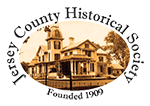A Quick History of Jersey County
The first known settlers in what is now known as Jersey County were Daniel Allen and his two sons, Daniel and James. The year was 1815.
Others soon followed, mostly from such southern states as Tennessee, Kentucky, and the Carolinas. These were woodsmen, who tucked their cabins into tracts of timber rather than building on the prairie, where native grasses grew up to eight feet tall, providing an ideal hiding spot for hostile Indians and wild animals. An even greater danger posed by the prairies, however, was the fire. By late summer, the grass became dry as tinder, and a lightning strike could send a fire raging across the prairie, consuming everything in its path.
The tide of immigrants gradually shifted, and soon Germans from New Jersey accounted for the majority of the area’s newest members.
Jerseyville, the county seat, began as Hickory Grove, a very small settlement consisting of three log cabins and the Red House. In 1834, a post office was established, and the city’s name was changed to Jerseyville in honor of its many New Jersey immigrants. Other names bandied about were Liberty, Livingston, and New Hampshire.
In 1839, Jersey County broke from Greene County. When Jerseyville was declared the county seat, some said it had little hope of competing with the bustling town of Kane or prospering so far from an abundance of timber.
The population of Jersey County has grown steadily since its inception, from 4,535 in 1840 to nearly 23,000 in 2010, but agriculture still provides the base of the local economy. Today Jersey County includes two cities (Jerseyville and Grafton); four villages (Brighton, Elsah, Fidelity, and Fieldon); and one town (Otterville, one of only 17 unincorporated towns in Illinois). It also is home to Illinois’ largest state park, Pere Marquette, and Principia College.
Jersey County Historical Society
601 N. State St.
Jerseyville, IL 62052
618-498-3514
